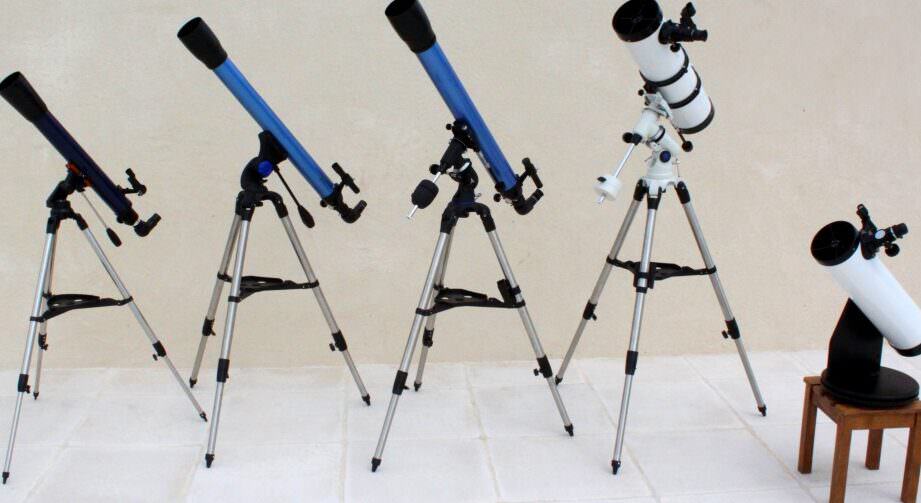Get your child a window into the cosmos, more than just a toy, but a tool to satisfy their insatiable curiosity – a children’s telescope. It sparks their desire to learn and understand how the Universe operates, why it is vast, and the possibility of other intelligent beings. Our team, alongside industry experts, have thoroughly examined the available children’s telescopes on the market, and present to you the top options for 2023.
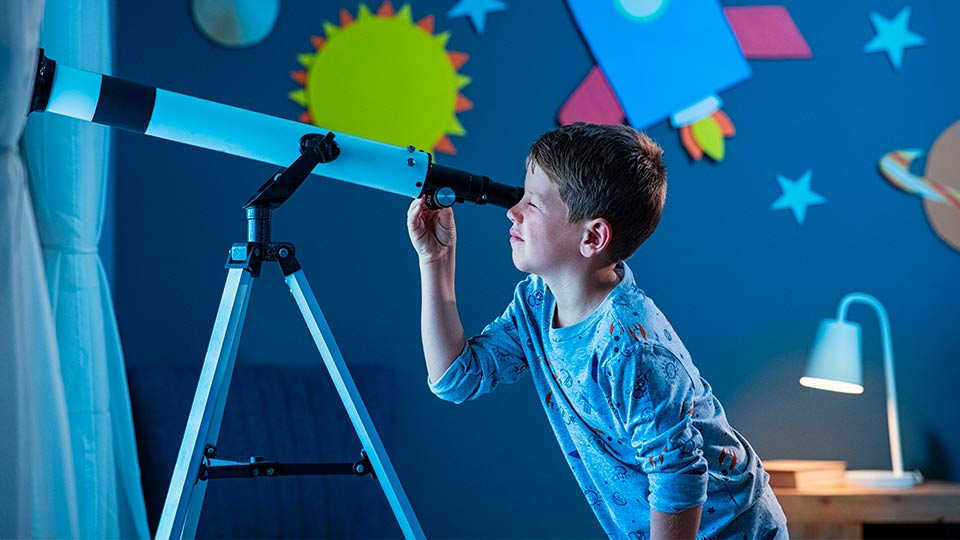
Irrespective of the design, all telescopes for children are equipped with the following components.
- The objective lens (or mirror) collects light and projects it to the focal point for observation. The mirror can be either spherical or hyperbolic, with the latter being superior.
- The eyepiece magnifies the image and corrects any distortions introduced by the lens.
- The Barlow lens is an additional optical accessory that can be inserted into the light path to further enhance magnification.
- Additional mirrors and prisms are used to correct the orientation of the image for more convenient observations.
- Mounting – a structure that provides stability and orientation of the telescope relative to the surface and horizon. For children’s telescopes, mounts with azimuthal adjustment are utilized, enabling rotation of the instrument in both the horizontal and vertical planes.
- Seeker, an additional small refractor telescope that is affixed to the main tube, aligned with the telescope’s optical system. The magnification of the finder is modest, but the field of view is significantly wider. The observer scans through the visible objects and locates the desired one among them. Opt for models of the Red Dot type of finders, which project a “red dot” in the field of view of the eyepiece precisely where the telescope lens is pointed.
- A focuser is a device that optimizes the clarity of the image in the eyepiece.
Children’s telescopes, available for purchase in 2023, are designed based on two classic designs.
- Galileo lens (refractor) telescopes
The objective lens is a double-convex lens or optical system that refracts light rays and focuses them into a compact image in front of the eyepiece. These instruments are resistant to shaking and do not require readjustment after being moved. The telescope tube is protected from dust and moisture. Even a child aged 6-7 can learn to operate such a telescope.
The lens is a hyperbolic or spherical mirror that performs the same focusing tasks as the lens in the refractor design. The focused image is reflected by an internal flat mirror into the eyepiece.
- Easy to set up and operate,
- Lightweight,
- The stable mount is the structure on which the instrument is mounted.
The most basic and affordable telescopes for children offer a magnification of up to 40 times. This enables you to observe the satellites of Jupiter, the rings of Saturn, and enough detail to examine the surface of the Moon. However, you will not be able to see the evidence of human landing on the Earth’s satellite or a small monument, to be more precise, a memorial tablet with the names of the astronauts and cosmonauts who sacrificed their lives for the exploration of space beyond our planet.
Editor’s Pick
The rating is determined by the KP editorial team’s assessment. If you have any recommendations or additions to the rating, please send them to [email protected]. For inquiries regarding advertising partnerships, please call +7 (495) 637-65-16 on weekdays from 9:00 to 18:00.
If a child shows interest in exploring the universe, it’s important to provide support. Observing the sky helps develop memory, analytical skills, imagination, and provides a subtle introduction to astronomy and physics. Additionally, there are smartphone applications available that incorporate virtual reality elements, combining the eyepiece image with a map of the starry sky.
We will showcase the top children’s telescopes according to KP, and here is our standout choice.
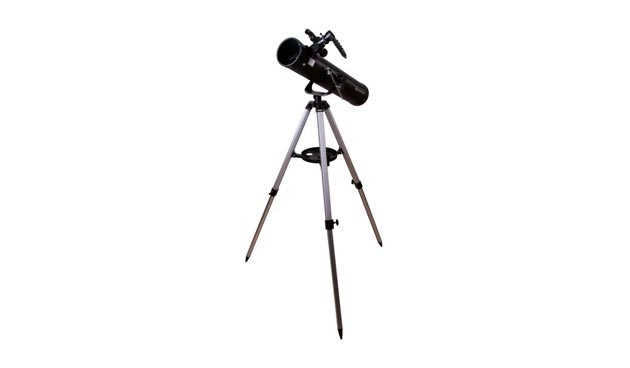
A telescope with an optical system based on the Newton reflector design, featuring a primary mirror measuring 76 mm in diameter. The instrument’s tube is securely mounted on an azimuthal mount and an aluminum tripod. This telescope is lightweight and user-friendly. It is equipped with two eyepieces offering different magnification options, a Barlow lens, a red dot finder, and an accessory table that serves as a spacer for the tripod. Additionally, there is a smartphone holder with suction cups attached to the tube above the eyepiece, allowing for capturing images of celestial bodies.
This telescope is perfect for young astronomers who can use it to observe lunar craters with a diameter exceeding 8 km, Saturn’s rings, Jupiter’s satellites, various double stars and star clusters, as well as the brightest objects in deep space.
A special coating is applied to the mirrors to prevent them from darkening over time. The optical system is designed to have minimal achromatism, ensuring that the objects observed will not exhibit color distortions or halos at the edges.
Key features
| Type of telescope | Reflector |
| Lens diameter | 76 mm |
| Eyepiece magnification | 35-525 magnification |
| Mounting | Azimuthal |
| Installation | Floor standing |
| Dimensions | 750 x 280 x 250 mm |
| Weight | 6.26 kg |
Advantages and disadvantages
This device is perfect for beginners; the focusing mechanism allows for precise adjustments for optimal sharpness; it also provides the opportunity for astrophotography.
Ranking of the top 10 best telescopes for kids, according to KP
A cheap and low-quality toy telescope can easily discourage a child’s interest in the night sky, as it is unable to provide a clear and bright image, even of the Moon. However, reputable manufacturers of optical equipment have special series of telescopes designed specifically for children of different ages. With a wide range of options available, finding an extraordinary gift that doesn’t break the bank is possible, while also sparking a strong interest in the study of the universe.
Levenhuk Skyline Travel 70
can be rephrased as “The Levenhuk Skyline Travel 70 is a versatile telescope perfect for traveling.”
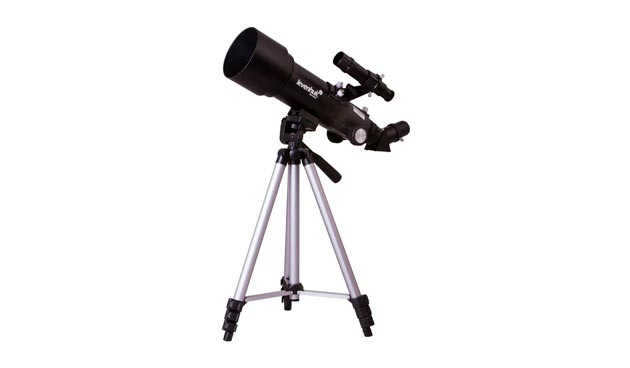
The Levenhuk Skyline Travel 70 is an excellent refractor telescope that offers high-quality glass optics and user-friendly operation. With this telescope, you can easily observe the planets in our solar system as well as the surface of the Moon. Additionally, on clear nights and away from light pollution, you can even spot objects from the Messier catalog with a star magnitude of up to 11.5. For example, you’ll be able to see stunning sights like the Crab Nebula or the Andromeda Galaxy. The telescope also comes with a diagonal prism that ensures a straight and non-inverted image, making it convenient for observing terrestrial objects such as migratory birds or wildlife.
The telescope can be easily transported in a specially designed backpack, which includes compartments for the optical system, accessories, mount, and tripod. This allows for convenient and safe transportation of the instrument for observing the night sky outside the city. The telescope is equipped with an azimuthal mount, which is securely attached to a sturdy aluminum tripod. With this setup, there is no need for any additional adjustments – simply place the telescope in the mount and use the special handle to point it in the desired direction.
Main features
| Type of telescope | Refractor |
| Diameter of lens | 70 mm |
| Magnification of eyepiece | 12-140 magnification |
| Mounting type | Azimuthal |
| Installation type | Floor |
| Dimensions | 460 × 340 × 160 mm |
| Weight | 2.7 kg |
Advantages and disadvantages
This device is extremely responsive to any touch, however, it lacks micrometer screws for precise aiming.
Enstroll C2132.
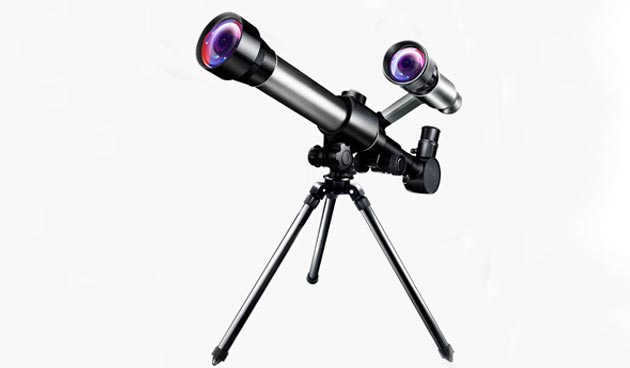
Children aged eight and above can use this Chinese refractor telescope. It is designed to be used on a desktop tripod with an azimuthal mount, making it suitable for installation on a balcony, in a summerhouse gazebo, or on a windowsill.
The telescope can rotate 360 degrees, allowing for easy navigation. The lens coating ensures a clear and bright image. The device also features a compass on its body, which helps in locating objects in the night sky. It comes with three eyepieces with magnifications of 20, 30, and 40. Additionally, a lens hood is included to protect against backlighting from streetlights.
Main features
| Telescope type | Astroscope |
| Lens diameter | 60 mm |
| Eyepiece magnification | 20-40x |
| Mounting | Azimuthal |
| Installation | Desktop |
| Dimensions | 500 x 75 x 230 mm |
| Weight | 0.733 kg |
Advantages and disadvantages
Rifray 70076.
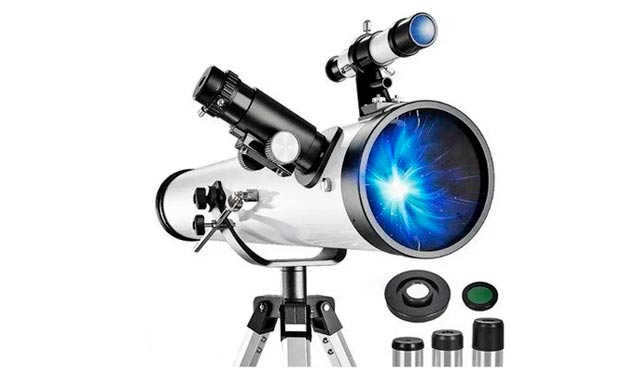
This particular model is specifically designed to be used in school observatories as well as by private individuals. It offers the observer a clear and crisp image, not only in the center but also at the edges of the picture.
The set comes complete with three different eyepieces, each offering various magnifications, a double Barlow lens, as well as lunar and solar filters. Additionally, the mount’s height is fully adjustable, ranging from 755 to 1190 mm, making it even easier to align the telescope with celestial objects.
However, it is important to note that the mirror and tilted image may pose some challenges during observations, as the provided instructions are incomplete.
Main features
| Telescope type | Reflecting |
| Aperture size | 76 mm |
| Eyepiece magnification | 35-350x |
| Mount type | Azimuthal |
| Installation | Floor mount |
| Dimensions | 850 x 850 x 1400 mm |
| Weight | 4 kg |
Advantages and disadvantages
Sky-Watcher BK 705AZ2
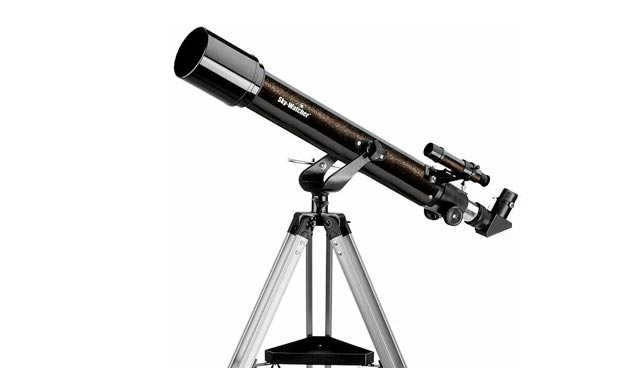
The telescope’s lens design has been engineered to minimize chromatic aberration, while the multilayer lens coating enhances image brightness and clarity. This makes the Sky-Watcher BK 705AZ2 an ideal choice for amateur astronomers looking to observe various celestial objects.
With this telescope, beginners can easily observe the Moon’s surface, planets within our solar system, and stars up to 11.9 magnitude in the Messier catalog. Additionally, it is also suitable for terrestrial viewing.
The package includes two eyepieces with magnifications of 20x and 50x, as well as a Barlow lens and an accessory tray that doubles as a tripod spacer. The eyepiece seat is equipped with a standard T-thread (M42) for attaching an SLR camera, allowing users to capture high-quality photos and videos.
Main characteristics
| Telescope type | Achromatic refractor with eliminated chromatic aberration |
| Lens diameter | 70 mm |
| Eyepiece magnification | 140x magnification |
| Mounting | Azimuthal |
| Installation | Free-standing |
| Dimensions | 245 x 310 x 970 mm |
| Tube weight | 1.4 kg |
Advantages and disadvantages
This device is lightweight and convenient for field observations. It comes with a stable tripod that has an adjustable mount height, two eyepieces, and an enlightening lens coating. Additionally, it has the capability to take photos and videos with an SLR camera.
Which gadget can serve as an excellent present for a child, expanding their knowledge? What purchase can spark a new hobby for people of all ages, genders, and incomes? What activity requires focus and diligence while also encouraging outdoor adventures? As you may have guessed from the title, these inquiries pertain to telescopes and amateur astronomy.
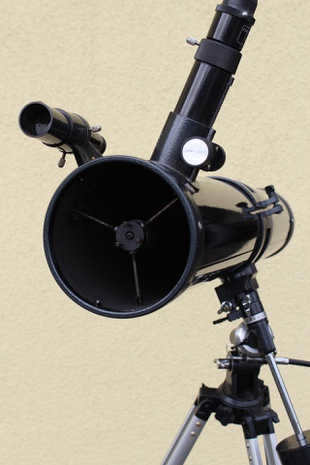
First and foremost, it is important to highlight that a telescope is not particularly useful without the proper knowledge. In this case, a starry sky map, available in both electronic and paper forms, can be of great help. It is worth mentioning that modern astronomy programs allow for printing out maps on paper, making them suitable for outdoor use. Additionally, some high-quality telescopes may come with a complimentary license for such an application.
By having a map, one can familiarize themselves with the objects that can be observed in the sky. It is then recommended to delve into their properties, which can further ignite an interest in astronomy itself, as it is fascinating to study the vastness of celestial bodies.
Distinctive Features of Telescopes
Once you familiarize yourself with the various celestial entities, you can delve into the distinctions between telescopes. Like any other technological gadget, telescopes possess a range of characteristics that enable us to determine the pros and cons of each model.
This is the primary attribute of the telescope, not the level of magnification, as one might assume. Why?
The reason is that any object observed in an optical telescope serves as a source of light, whether reflected or self-generated. In such cases, if the object is already bright enough to be seen with the naked eye, its finer details will appear less bright.
In addition, there are objects that emit light in insufficient quantities for our eyes to perceive.
Therefore, a telescope, or any similar optical device, acts as an “amplifier” for the incoming light that enters our eye.
Consequently, the main defining characteristic of a telescope is the diameter of its aperture, which refers to the diameter of its lens. The larger the aperture, the more information we can gather from it.
The telescope’s magnification
The magnification of a telescope is determined by the ratio of the focal length of the objective lens to the focal length of the eyepiece. This factor plays a crucial role in determining the angle of view of the telescope. Higher magnifications are ideal for observing the finer details of celestial objects such as moons and planets, which are considered point objects. On the other hand, lower magnifications are more suitable for observing extended objects like nebulae.
Aside from magnification, the field of view of the eyepiece also influences the telescope’s angle of view. To expand the scope of your telescope, it may be beneficial to invest in a different eyepiece that offers a wider field of view.
Magnification resolution (maximum useful magnification)
The maximum useful magnification of a telescope is determined by multiplying the diameter of the objective lens in millimeters by two. In other words, if you want to observe the rings of Saturn, you need to consider the resolving magnification, which depends on the size of the lens. The larger the diameter, the more detail you will be able to see. It’s important to note that mere magnification alone does not determine this capability.
Focal length of the lens
The aperture of the lens, which is determined by the ratio of the diameter to the focal length, depends on this characteristic. The aperture is a key factor that affects the camera settings for astrophotography.
However, increasing the aperture value can result in the presence of optical distortions known as aberrations. It is important to find a balance between the aperture and focal length, taking into consideration your specific goals and tasks.
Categories of telescopes based on their optical structure
Regarding the telescopes themselves, they are comprised of multiple detachable components, allowing for easy transportation when disassembled. These individual parts can be interchanged for various telescope models, and it is their characteristics that ultimately determine the overall properties of the telescope.
Of course, we will not be discussing amateur telescopes, such as optical, radio, and X-ray telescopes.
As we are aware, the primary elements that can be found in an optical device are lenses, prisms, and mirrors. Depending on their presence and arrangement, telescopes can be categorized into several types:
Refractor telescopes
Refractor telescopes are designed with elongated shapes, using lenses as their primary optical elements.
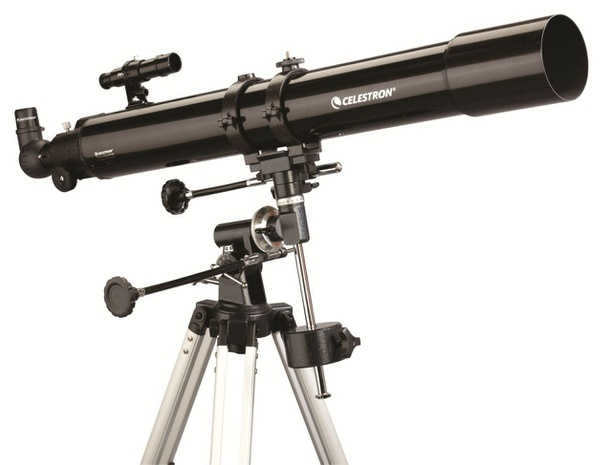
Celestron PowerSeeker 70 EQ Refractor Telescope
Indeed, it is the oldest kind of telescope, historically the first to emerge. And it is far from being the worst, as it possesses several advantages over other telescope types. Here are those benefits:
- Durability. Optical lenses have a well-known ability to maintain their properties for several decades.
- Airtightness. The sealed design prevents dust from infiltrating the telescope.
- High image quality.
- The potential to produce a direct image when utilizing wraparound prisms.
However, the refractor telescope does have its drawbacks:
- Small relative aperture, resulting in limited light entering the telescope.
- The elongated length reduces ease of transportation and storage.
- Chromatic aberrations occur when colored fringes appear on the edges of objects.
What is the optimal use for this particular telescope? A refractor is ideal for observing bright objects, such as stars, planets, and satellites. It is capable of capturing the rings of Saturn and dust storms on Mars.
However, there are celestial objects that cannot be seen with the naked eye due to their low brightness rather than their size. These include nebulae, galaxies, and other similar phenomena. In such cases, a different type of telescope would provide better value for your money.
Reflecting Telescopes
Reflecting telescopes utilize mirrors as their primary optical components. Specifically, a large concave mirror is positioned at the back of the telescope and reflects light onto a small mirror situated in the center of the device. As a result, reflectors have a shorter length compared to refracting telescopes with the same focal lengths. In other words, while refractors can be described as a “tube,” reflectors resemble more of a barrel in shape.
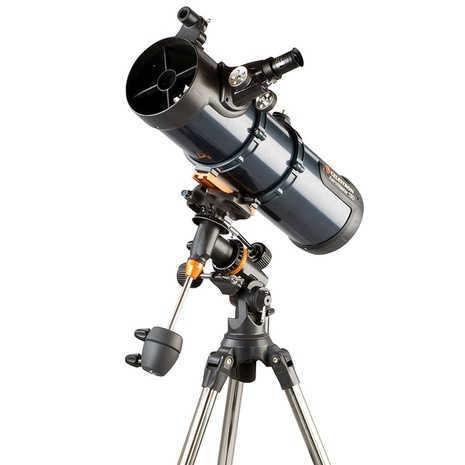
Celestron AstroMaster 130 EQ reflector telescope
Reflector telescopes offer several advantages:
- High brightness. In simple terms, the large diameter of reflector telescopes allows a significant amount of light to enter, enabling the observation of dim objects in space.
- Compact size.
However, these telescopes also have certain drawbacks:
- Open design. This exposes reflector telescopes to the risk of dirt entering the body.
- Coma – an aberration where light sources at the edges produce elongated images.
- Mirror durability.
- Thanks to its large mirror and aperture, a reflector telescope allows us to observe objects with low brightness, particularly those outside the solar system, known as deep space objects.
- Additionally, reflector telescopes are also suitable for observing other types of objects.
Mirror-lens telescopes
As their name suggests, mirror-lens telescopes incorporate both mirrors and lenses in their design, making them a hybrid of the first two types. They offer the following advantages:
- Sealed construction.
- Absence of aberrations. The combination of mirrors and lenses allows for the compensation of each other’s shortcomings, eliminating both chromatic aberrations and coma.
- Compact size.
Therefore, the design of mirror-lens telescopes allows for a reduction in size compared to the first two types. This feature can be beneficial in two scenarios:
- A compact telescope with moderate specifications, ideal for travel, is currently being developed.
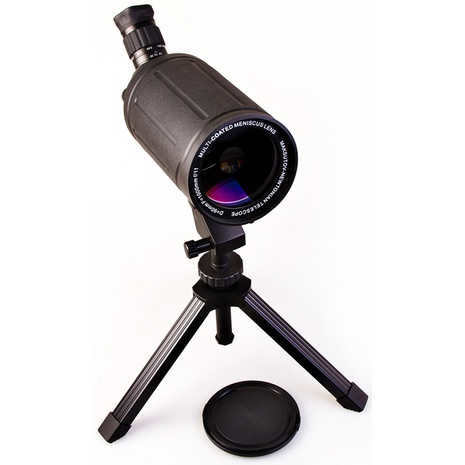
Introducing the Veber MAK 1000×90 Telescope
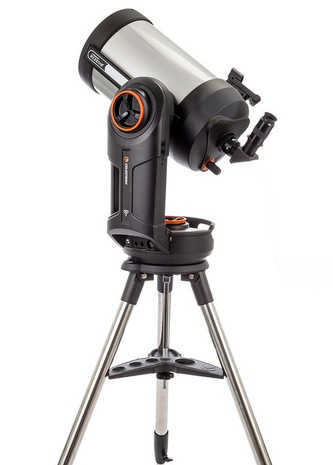
Celestron NexStar Evolution 9.25 telescope
Mirror-lens telescopes often come with a motorized mount, which enables you to automate the process of locating and tracking celestial objects.
Various Types of Telescope Mounts
A telescope mount, in simple terms, is a device that holds the main tube on a tripod or stand and allows for easy control of its direction.
When discussing telescope mounts, it is important to address the following question first.
The fact is that the night sky is constantly rotating around the Earth, and its axis of rotation does not align with the Earth’s axis of rotation. As a result, objects observed through a telescope appear to move, requiring continuous adjustments to keep them in view. The convenience of making these adjustments is determined by the design of the mount.
Alt-azimuthal. The telescope revolves around two intersecting axes – the vertical (azimuthal) and the horizontal. To account for the displacement of objects in the celestial sphere, the telescope must move along both axes simultaneously, which adds complexity to its operation.
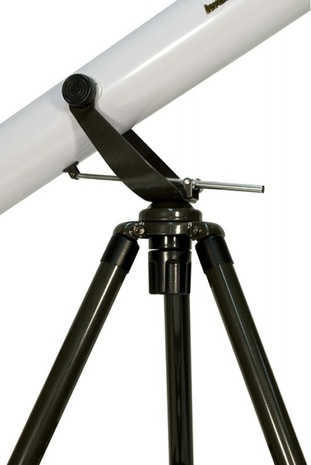
The azimuthal installation of the telescope
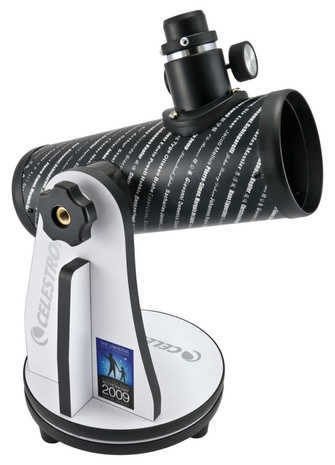
The Celestron FirstScope 76 is a telescope that features a Dobsonian azimuthal mount.
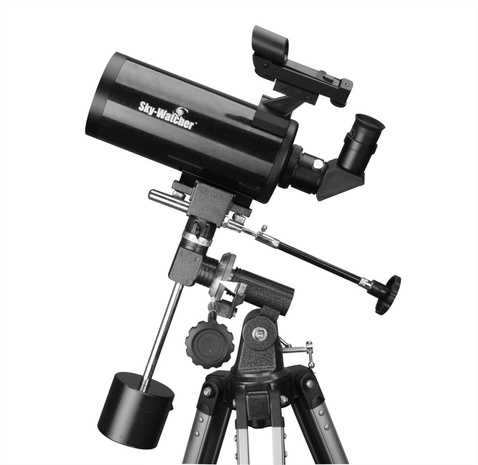
Equatorial mount telescope
As mentioned before, there are motorized mounts available. In their simplest form, they consist of a motor with a gearbox, which enables the telescope to rotate at the desired speed for tracking celestial objects.
More advanced versions of mounts can operate in automatic mode, accurately pointing the telescope towards a specific celestial object by its name or coordinates.
Using the telescope without the correct optical accessories is not feasible. These accessories are necessary for customizing the instrument to specific tasks. Let’s discuss them in order of significance.
Optical Eyepiece
The optical eyepiece is the component of the telescope responsible for forming an image that is viewed by the observer.
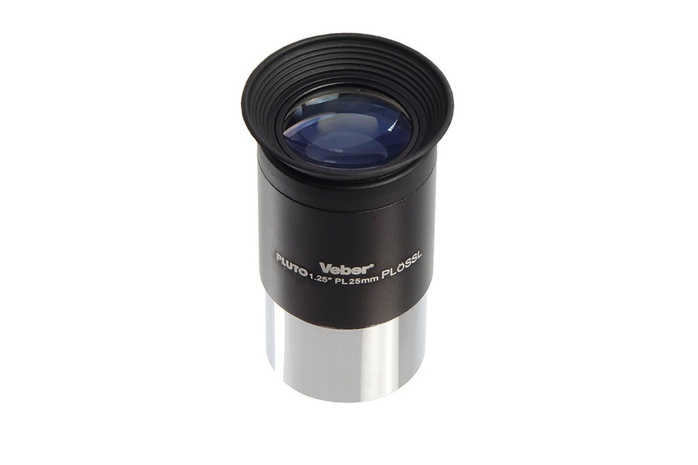
Veber Pluto 25mm PLOSSL 1.25″ telescope eyepiece
When it comes to telescopes, you have the option to interchange the eyepieces. The focal length is the main characteristic to consider when selecting an eyepiece, as it directly impacts the telescope’s magnification, as previously mentioned. The shorter the focal length of the eyepiece, the higher the magnification of the telescope. However, it is important not to surpass the maximum useful magnification when choosing an eyepiece.
Explorer
When observing images of telescopes, it is possible to discern a compact optical cylinder that is affixed to the primary telescope, running alongside it. This component is commonly referred to as the seeker.
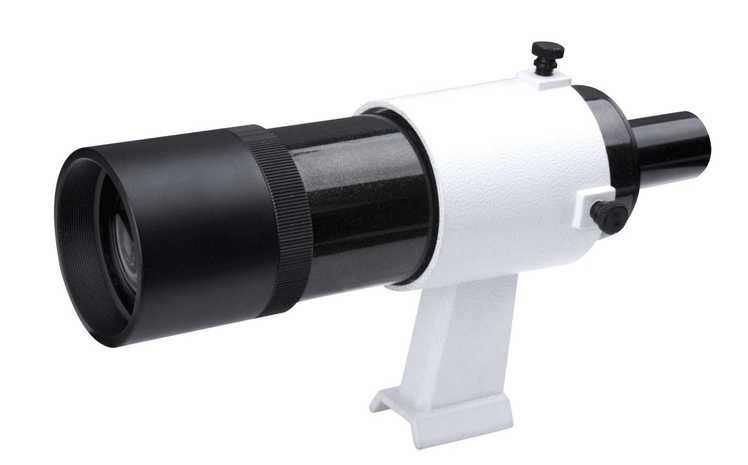
The Sky-Watcher 8×50 optical finder
It is easy to deduce that a finder is used to direct a telescope, providing a broader view.
Typically, finders come with magnification and focusing capabilities, although there are also models equipped with a red dot, which functions similarly to a holographic sight.
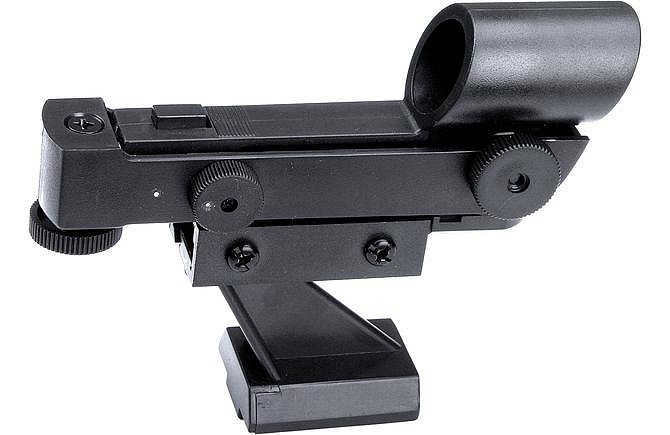
Synta Sky-Watcher red dot finder
In addition, the red dot finder can be enhanced with a laser beam that is detectable in the atmosphere, enabling precise alignment of the telescope.
Barlow lens
An alternative attachment is the Barlow lens, which is positioned in front of the eyepiece and increases the focal length of the objective lens. The level of magnification achieved is the primary parameter of the Barlow lens.
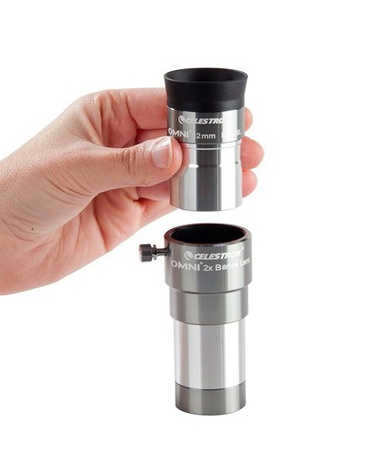
The Barlow lens incorporates a lens that is inserted into it.
In theory, a single Barlow lens effectively doubles the range of magnifications that can be achieved with a telescope’s eyepieces. For instance, if you have two eyepieces, using a Barlow lens will provide you with four different magnification options.
Furthermore, using a Barlow lens also increases the eye relief of the eyepiece, allowing for a greater distance between the eye and the eyepiece during observations.
However, like any additional optical element, the Barlow lens can introduce certain distortions into the image.
Some Barlow lenses also serve as camera adapters, featuring a dedicated T-thread on their bodies for this purpose.
Prisms for Wrapping Around and Diagonal Mirrors
One way to straighten the visible image, preventing it from being inverted or mirrored, is to use a prism. This accessory is typically mounted in front of the eyepiece.
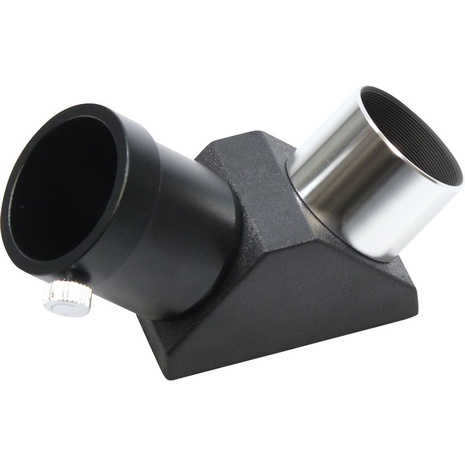
The selection of a telescope: a wraparound prism
Diagonal mirrors operate in a similar manner, where the image is not inverted but is horizontally mirrored, as opposed to prisms.
Both of these types of accessories prove to be beneficial when it comes to observing objects on land.
Optical filters are glass devices that permit the transmission of light with specific properties. They are commonly utilized in telescopes, where they are affixed to the eyepiece.
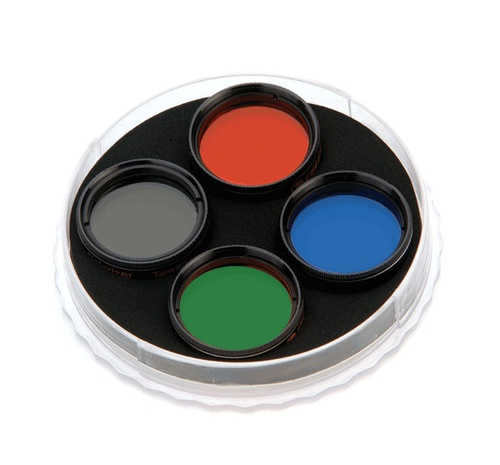
Optical filters for a telescope
Let’s go through the different types of filters available for telescopes (the purposes of many of them are self-explanatory).
- Solar filters.
- Lunar filters.
- Colored filters (green, orange, red, yellow, purple).
- Deep Sky filters. Typically, these filters transmit light in a narrow range, making them ideal for observing deep space objects.
Therefore, amateur telescopes are a versatile device that can be enhanced with various accessories.
Conclusions
Astronomy is not a commonly pursued hobby. This is because it is a pursuit for the passionate – despite the technical simplicity of telescopes, there are numerous intricacies that require extensive knowledge of the subject.
Furthermore, nowadays, people are not as enthusiastic about space as they were, for instance, half a century ago. Discoveries in astronomy span from local challenges to extremely distant objects. It is already evident that there are no exclusive resources, let alone life, in the vicinity of our planet.
The fact that astronomy is not extensively studied in schools also plays a significant role.
Nevertheless, we believe that this field of science and the practice of using telescopes can captivate anyone, and it is worth exploring. Surprisingly, even amateurs have the potential to spot something new in the sky.

Enthusiasts of the night sky will forever be captivated by its enigma, unparalleled beauty, and, of course, the multitude of theories and conjectures surrounding it.
Astronomy is a pastime for the intellectual and the curious, and thanks to state-of-the-art, high-powered telescopes, anyone can satiate their inquisitiveness and examine the vast array of celestial objects.
We have compiled a comprehensive list of helpful tips that will prove beneficial to both novice and experienced astronomers alike, as well as handpicked five exceptional telescopes of superior quality.
Before we start using a telescope, it’s important to have a good understanding of our surroundings. This includes knowing when, where, and how it’s best to observe celestial bodies.
Stargazing can be enjoyed all year round, as different constellations shine brightest in different regions and during different seasons.
If you have the opportunity to travel and explore different parts of the world, make sure to take advantage of the chance to gaze at the Southern Hemisphere’s night sky. It offers the best view of the Milky Way and showcases a whole new set of constellations. Meanwhile, professional astronomers often focus their attention on the equator and the Earth’s poles.
In Russia, some of the best places for stargazing include Baikal, the Altai Mountains, and cities in the southern region.

The most convenient times for observing are late summer and early fall. During these times, the nights are dark enough and warm enough to enjoy starry nights with pleasure. However, winter has its own advantage – the nights are longer, providing more time for viewing.
To ensure that you see exactly what you are interested in and avoid confusion, you can use special applications that show the location of stars in the sky.
It is important to observe in the dark. Looking at the sun without the necessary equipment is strictly prohibited, as it is very dangerous and can result in vision loss.

To achieve the optimal view of the stars, there are several factors to take into consideration. Firstly, the weather conditions play a crucial role – a clear or minimally cloudy night sky is essential for stargazing. If the sky is covered in clouds, the chances of seeing anything diminish significantly. Seasoned astronomers even recommend selecting nights with low levels of humidity and dust, as these particles tend to absorb light.
The second factor to consider is the observing location. Experienced astronomers typically recommend venturing outside of urban areas, with the farther away from populated regions being preferable. As a general rule, traveling approximately 70-100 km away from the city will provide a serene view of the starry sky.
When you venture outside the confines of the city, the absence of light pollution creates a much better visibility for stargazing. Unwanted light sources do not cause glare, allowing for a clearer view. It is advisable to seek higher vantage points for optimal sky observation. That is why observatories are typically situated at elevated locations. While mountains are the ultimate choice for stargazing, elevated areas and hills also provide suitable conditions.
Even within the city, it is still possible to spot the brightest stars and planets, although favorable weather conditions play a crucial role in this scenario.
Naturally, the quality of the telescope is of utmost importance.
We have carefully curated a selection of the top five telescopes, catering to children, beginners, amateurs, experienced users, and professionals. These telescopes guarantee a seamless and enjoyable experience while observing the magnificent night sky.
Top-rated telescopes
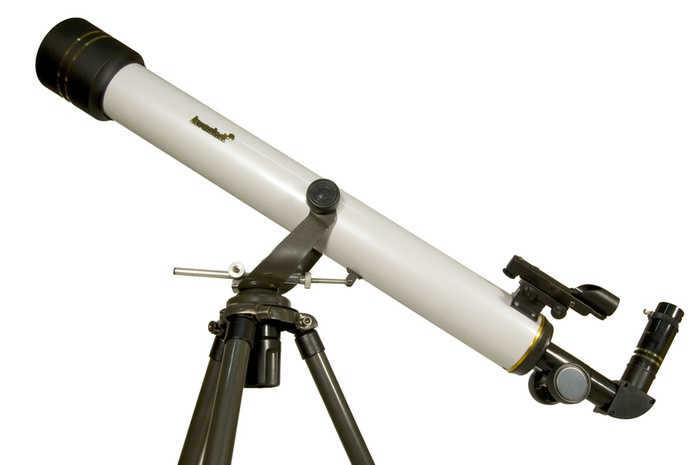
For kids: Levenhuk Strike 60 NG
The Levenhuk telescope can be a perfect educational tool for a child who has a passion for astronomy. Along with the telescope and eyepieces, the kit includes a comprehensive manual. This manual allows the child to explore 280 of the most captivating and intriguing celestial objects. Additionally, the telescope comes with vibrant posters featuring stars and planets that are remarkably easy to identify, as well as a virtual planetarium disk.
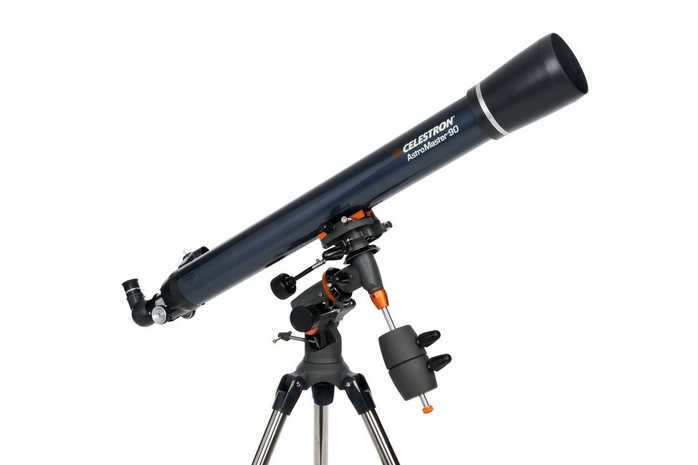
Perfect for beginners: Celestron AstroMaster 90 EQ
This refractor telescope is ideal for individuals who are just starting out in astronomy, including both adults and children. With this telescope, you have the ability to observe both terrestrial objects and stars, making it versatile for various viewing experiences. The AstroMaster series of telescopes is known for its exceptional quality and includes all the necessary accessories to enhance your observing sessions.
Featuring optical elements crafted from high-quality glass and equipped with advanced coatings, this telescope enables you to not only view the brightest celestial objects, but also distant ones that are otherwise difficult to see. With the Celestron AstroMaster 90 EQ, you can observe objects that are 13 times smaller than what can be seen with the naked eye. The telescope boasts a 90mm objective lens diameter and a focal length of 1000mm, providing you with clear and detailed views of the cosmos.
The Celestron AstroMaster 90 EQ telescope kit is equipped with two eyepieces that offer magnifications of 50x and 100x. It also features a built-in StarPointer for easy object identification. The kit comes with a tripod that has a shelf for accessories, making installation convenient.
Specifically designed for beginner stargazers, the kit includes the planetarium program TheSky X, which has a database of over 10,000 objects. This program also allows you to print star charts, providing a comprehensive learning experience.
With its versatile features, the Celestron AstroMaster 90 EQ telescope is ideal for beginners to learn and explore the cosmos. It will continue to serve you well as you delve deeper into the field of astronomy.
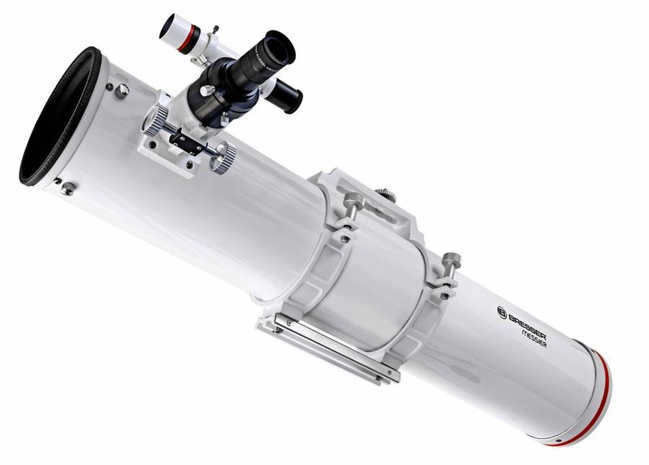
For beginners: Bresser Messier NT-130/1000 (EXOS-1)
The Bresser Messier NT-130/1000 is an ideal telescope for novice stargazers who want to explore the wonders of the night sky. With its 130mm aperture and 1000mm focal length, this telescope offers impressive views of celestial objects.
This telescope comes with a high-quality Plössl 26mm eyepiece, which provides a magnification of 36x. This allows you to observe the Moon’s surface in detail and explore deep space objects. The lenses are made of premium glass with a multi-layer coating, ensuring clear and sharp images.
In addition to its observational capabilities, the Bresser Messier NT-130/1000 is also suitable for astrophotography. You can easily attach a DSLR camera to capture stunning images of the night sky.
Don’t be mistaken, this telescope may be appropriate for newcomers, but it cannot be considered inexpensive, and its features are tailored for individuals who intend to engage in long-term stargazing.
Crafted with stainless steel, the telescope’s tripod is perfect for outdoor observations. Additionally, it provides exceptional stability and effectively reduces vibrations, rendering it highly comfortable and facilitating an effortless observing experience.
The Bresser Messier NT-130/1000 serves as an excellent option for avid astronomers.
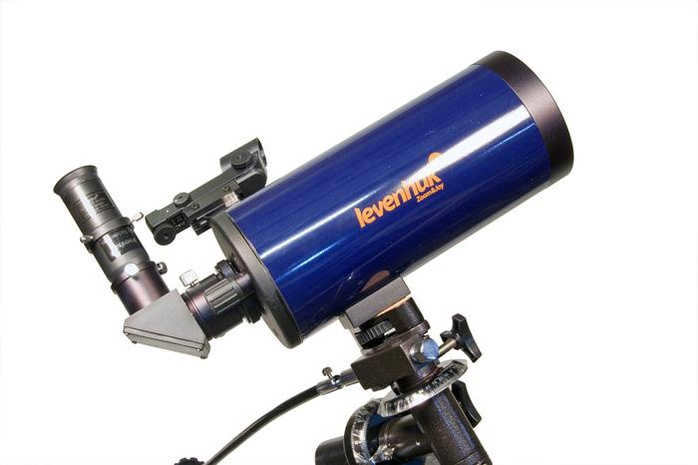
For experienced users: Levenhuk Strike 1000 PRO
If you are an experienced stargazer who appreciates advanced technology, then the Levenhuk Strike 1000 PRO is the perfect telescope for you. This telescope allows you to explore not only the planets in our solar system, but also deep space objects beyond. With a focal length of 1300mm, you can observe the Moon’s surface in great detail, as well as admire star clusters and nebulae.
This telescope features a 102mm aperture lens, which ensures excellent brightness and contrast in the images you capture. Additionally, it is compatible with a mirror camera, allowing you to take stunning pictures of celestial objects.
Along with the standard set of materials, the Levenhuk Strike 1000 PRO comes with a 2x Barlow lens, Plössl 6.3mm eyepiece, a set of colored, solar, and lunar filters, as well as a convenient case for transportation and storage.
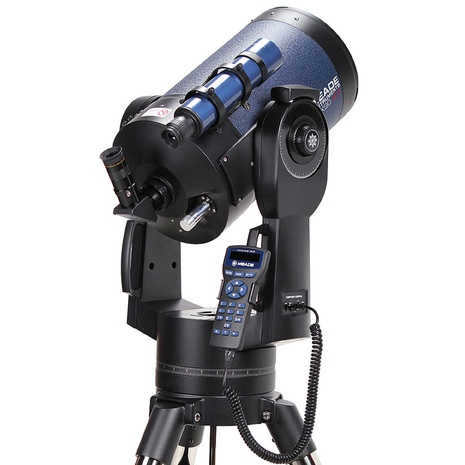
Exclusive for experts: Meade 8″ LX90-ACF Telescope
This state-of-the-art instrument is specifically designed for avid astronomy enthusiasts. If you have been stargazing with other telescopes for a long time, this is the perfect choice for you! The Meade 8″ LX90-ACF allows you to create your very own observatory, whether it’s in your home or in a remote location.
What sets this telescope apart from its counterparts is its unique optical design – a modified Schmidt-Cassegrain system with corrected comatic aberration. In simpler terms, this telescope is built on the most advanced optical technology available today.
The generous aperture of this telescope makes it effortless to observe celestial objects in deep space.
Another convenient feature that users will appreciate is the ability to start observing right out of the box – no assembly, installation, or setup required.
The Meade 8″ LX90-ACF is constructed using top-notch components, not to mention the exceptional image quality that this telescope can provide!
Now, armed with knowledge, you can confidently choose the perfect telescope for your needs and embark on a journey to explore uncharted constellations!
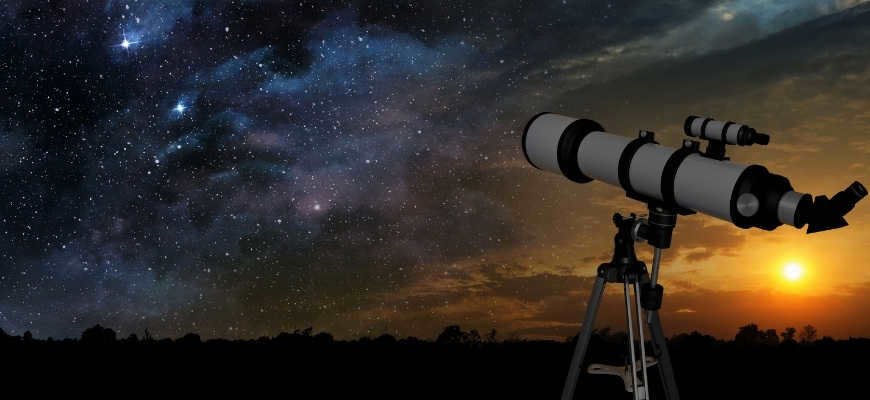
Rankings
Stargazing captivates not only experts but also hobbyists who cannot imagine their lives without the celestial expanse. However, even seasoned astronomers find it challenging to select the ideal home telescope.
Preferred by the majority:

There is an extensive selection of telescopes available for observing the stars:
- Refractor telescopes, also known as lens telescopes, are simple, dependable, and require minimal manual adjustments;
- Reflecting telescopes, or mirror telescopes, utilize a mirror as their primary component, ensuring that the image remains clear and sharp;
- Catadioptric telescopes, also known as hybrid telescopes, combine the best features of the previous models and are based on two different designs;
- Chromospheric telescopes are specifically designed for capturing images of the solar chromosphere.
Tips for selecting a telescope for novices
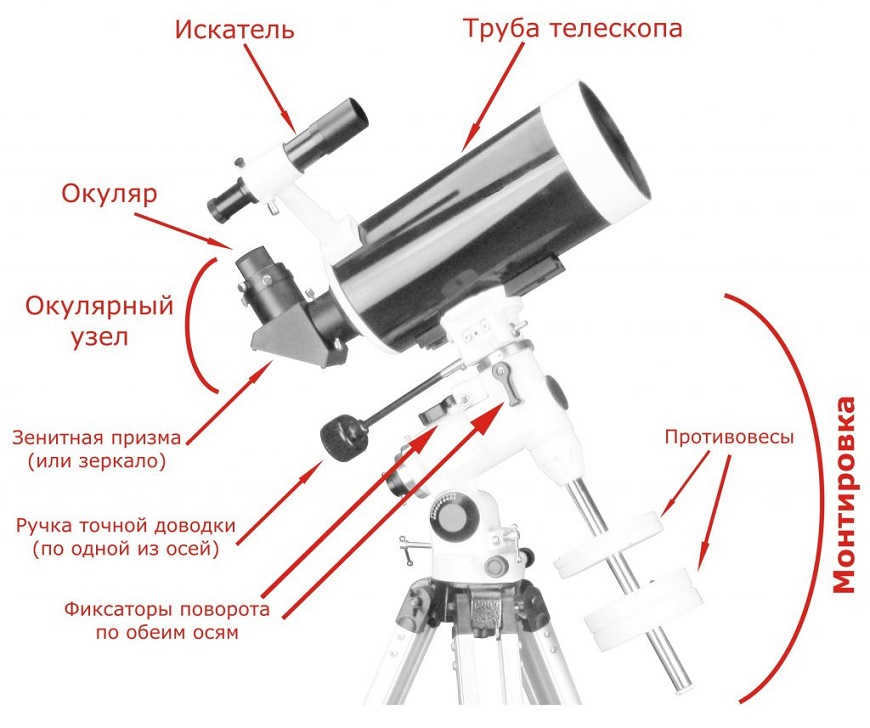

Choosing their first telescope can be a daunting task for beginners, as they struggle to determine the most crucial parameters.
There are only a handful of factors to consider:
- focal length;
- optical design;
- aperture;
- magnification;
- mount or tripod.
It’s also important to take your own experience into account. For novices, price and ease of adjustment play a significant role. However, more experienced astronomers may focus on the specifications, opting for quality and innovative technology.
This definition pertains to the measurement between two points:
Its measurement indicates the extent of the device’s visual reach. The ideal measurement is 700 mm.
Important! When selecting a telescope, it is not recommended to solely depend on the focus. This is because the same measurement can yield different outcomes with various lenses. Therefore, beginners should avoid fixating on this particular aspect.
Optical scheme
The optical scheme refers to the configuration that a telescope uses to display celestial objects. It is often referred to as the astronomer’s “eyes.”
There are two main categories of optical schemes:
The first category consists of lenses. Examples of such schemes include:
Reflex schemes, which utilize mirror optics. These schemes require more maintenance and tend to be more costly.
Lens size
For beginners, a lens with a diameter of 150 mm will suffice. This equipment allows for close observation of objects.
Enthusiasts and professionals, on the other hand, will require a lens with a diameter of 200-400 mm. With such equipment, they can observe distant celestial bodies.
Zoom ratio
No user manual provides the exact magnification. It is calculated individually for each instrument and may vary. The formula is simple: divide the focal length of the instrument by the focal length of the eyepiece. By changing the eyepiece, astronomers can adjust the magnification.
Important! Beginners often opt for higher magnification. However, a magnification of 20-100x will suffice for their needs.
Mounts and Stands: Exploring Your Options
When it comes to supporting your telescope or other optical instruments, there are various options available. Mounts are special supports equipped with rotating mechanisms, and they can be categorized into different types:
- Azimuthal mounts allow for vertical and horizontal movement, making them versatile and user-friendly.
- Equatorial mounts are designed to be adjusted according to latitude, making them ideal for large and heavy instruments used by professionals.
- Dobsonian mounts are a mixed type that offers stability and durability, making them a popular choice for those in search of a robust mount.
For beginner astronomers, the azimuthal mount is often the most suitable option, providing ease of use and flexibility. On the other hand, the equatorial stand is more relevant for advanced users who require precise adjustments for their heavier instruments.
Tips for selecting the ideal telescope based on price and quality
Choosing the right telescope can be a challenging task, even for seasoned buyers. This is especially true considering that each type of astronomer requires specific equipment.
Telescope for Kids
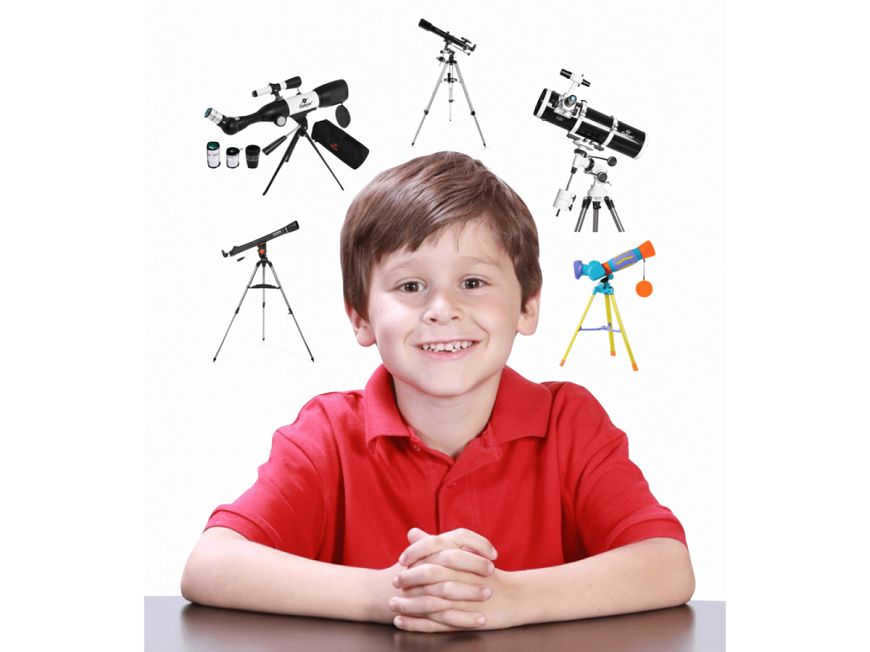
Children often have changing interests. Therefore, if a schoolboy suddenly becomes obsessed with the night sky, it may not be wise to invest in an expensive telescope for him. There are several reasons for this:
- The child may lose interest in stargazing;
- They may struggle with operating and adjusting complicated devices;
- Expensive telescopes often require the purchase of additional eyepieces.
For schoolchildren, a telescope with the following specifications would be more suitable:
This type of telescope allows for observing both terrestrial and nearby celestial objects.
For astronomy enthusiasts
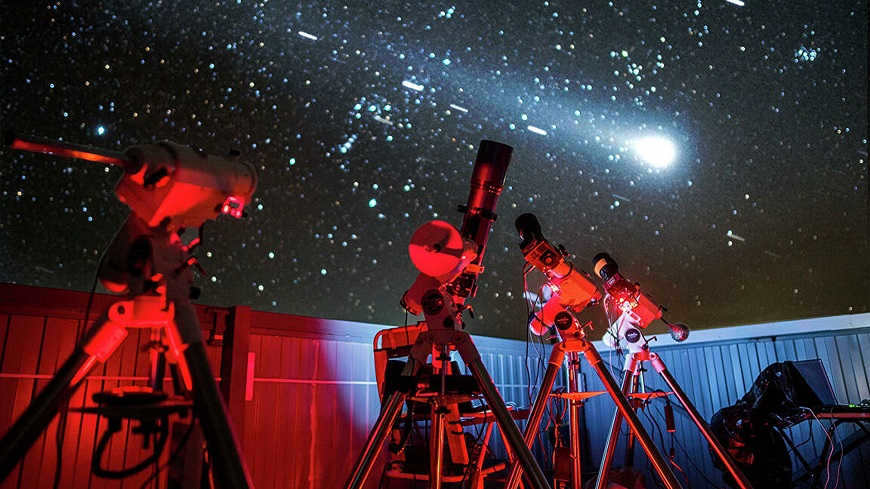

If you are serious about your hobby, it is important to consider purchasing the appropriate equipment. You have the option to choose between refractors and reflectors.
One of the key factors to consider is the diameter, which should be between 90-130 mm. This range is sufficient for observing objects at different distances from the city limits. However, in large cities, the quality of observations may be compromised. Therefore, it is recommended to look for portable models with a diameter of 250 mm. These devices can be easily transported outside the city where the sky is clearer, allowing for better observations.
Exploring the depths of outer space
When it comes to exploring the vast expanse of the universe, it is essential to have top-notch equipment with superior optics. To observe galaxies and nebulae, the following type of device is highly recommended:
Keep in mind! In this case, the magnification factor is not as crucial. Even with the lowest value, you can still achieve impressive results.
The top telescope manufacturers
Several well-established companies have been operating in the telescope market for many years. They offer a range of products, including both professional and budget-friendly models. These manufacturers are known for their consistent quality and extensive selection of additional features.
Among the leading companies in the industry are:
- Veber – This company emerged in the late 1990s and quickly became a leader thanks to its innovative technologies and diverse product range. Veber specializes in telescopes, binoculars, optics, and components for various instruments.
- Sky-Watcher – With over 40 years of experience, this Canadian company is a prominent player in the market. Sky-Watcher offers more than 15 lines of telescopes catering to different budgets, along with components, accessories, and binoculars.
- Bresser is a well-known German brand that specializes in manufacturing a wide range of products. Their product line includes binoculars, microscopes, eyepieces, and many other optical devices.
- Celestron, an American brand with a rich history spanning over half a century, is renowned for its innovative products. Their primary focus is on telescopes, which make up a significant portion of their product lineup.
- Levenhuk, a Russian company that made its mark in the United States in the early 21st century, is known for its cutting-edge telescopes and other optical equipment.
Overview of the top-rated telescopes for kids
Telescopes designed for children have several unique characteristics:
- They come with a refractor-achromat lens that has a diameter of up to 80-90 mm;
- They are equipped with an azimuthal mount;
- They are easy to operate and require minimal maintenance.
One of the main advantages of these telescopes is that they provide a non-reversed image, unlike their counterparts designed for amateur and professional use, which often require alignment.
Sturman HQ2 60090 AZ
Rewrite the text, making it unique, using the English language and preserving the HTML markup:
Sturman HQ2 60090 AZ
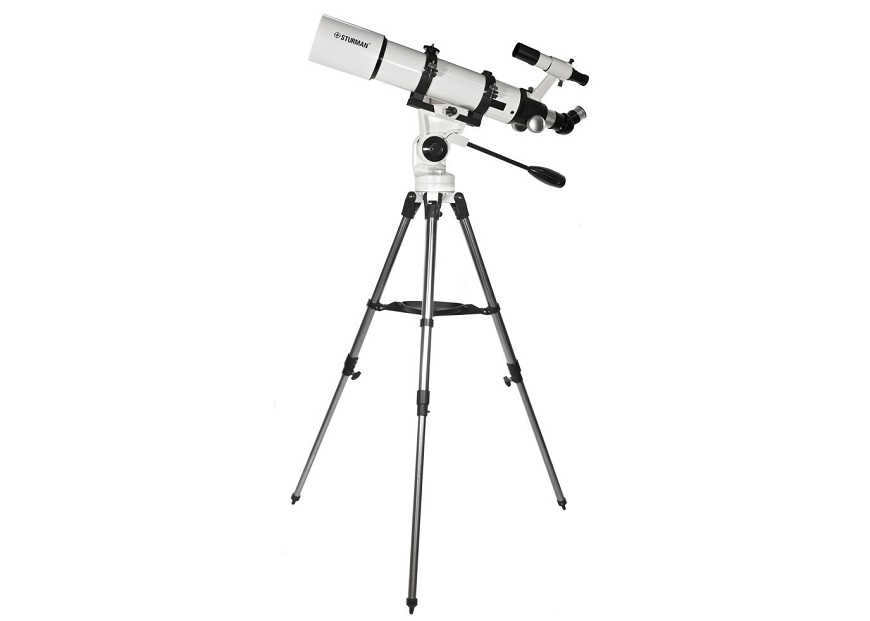
A traditional model with an excellent kit, which includes multiple eyepieces, provides a clear image.
- 600 mm focal length;
- 90 mm lens diameter;
- multilayer luminescence;
- maximum magnification of 180x.
Make money with us!
You will earn a competitive commission on each and every order!
Advice for selecting your initial telescope
Essential information to consider
Picking the optimal telescope for your needs can be quite challenging. Whether you are purchasing your telescope from an online retailer or from a local store, it is important to make an informed decision. To assist you in your search, we have compiled a list of helpful tips to consider when purchasing your first telescope.
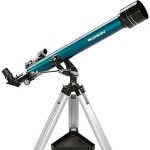
- What type of telescope do you require?
- Some crucial aspects often overlooked when purchasing a telescope.
- Tips for buying.
What type of telescope do you require?
One of the primary considerations when selecting a telescope is its intended use. While it may seem like a peculiar question, providing an accurate answer is highly significant. Certain telescopes allow for viewing not only the cosmos but also the Earth.
If you are in need of a versatile telescope, then the refractor telescope is the way to go. Another crucial consideration is what celestial objects you intend to observe?
Telescopes typically fall into two categories. Refractors (which are commonly attributed to Galileo as the inventor), like the ORION SkyView Pro 100ED, and reflectors, like the ORION SkyQuest XT12 IntelliScope (the first functional reflector was made by Newton). Refractors are considered superior for observing planets, while reflectors excel at capturing deep space phenomena.
The price is often underestimated when purchasing a telescope. The quality of the telescope is highly dependent on its price. A low-cost telescope from a toy store may not fully reveal the wonders of the cosmos to you. Conversely, an extremely expensive telescope may not always be the perfect fit for your needs, especially if it is your first telescope and you simply want to explore the world of astronomy.
Another aspect that is often overlooked is the available space. We are not referring to the vast expanse of the sky, but rather where you intend to store and use the telescope. Take a moment to consider where you will keep and utilize the telescope.
A telescope requires more space than just its physical footprint. It also needs room to move along its axis, and it requires more space than you might anticipate from simply observing it on a computer screen. If you purchase a telescope from a store, I recommend testing its range of motion in different directions to accurately gauge the space it will require for installation.
Have you considered where you will be using the telescope? This is a crucial factor to consider. I strongly advise against leaving the telescope exposed to the elements when not in use, as this will significantly reduce its lifespan. I recently came across an old telescope that was in dire need of repair after being left outdoors.
In addition, the telescope may require regular maintenance to ensure optimal functionality. Refractors generally require less maintenance compared to reflectors. However, a refractor, for the same price as a reflector, typically offers superior performance in most cases.

